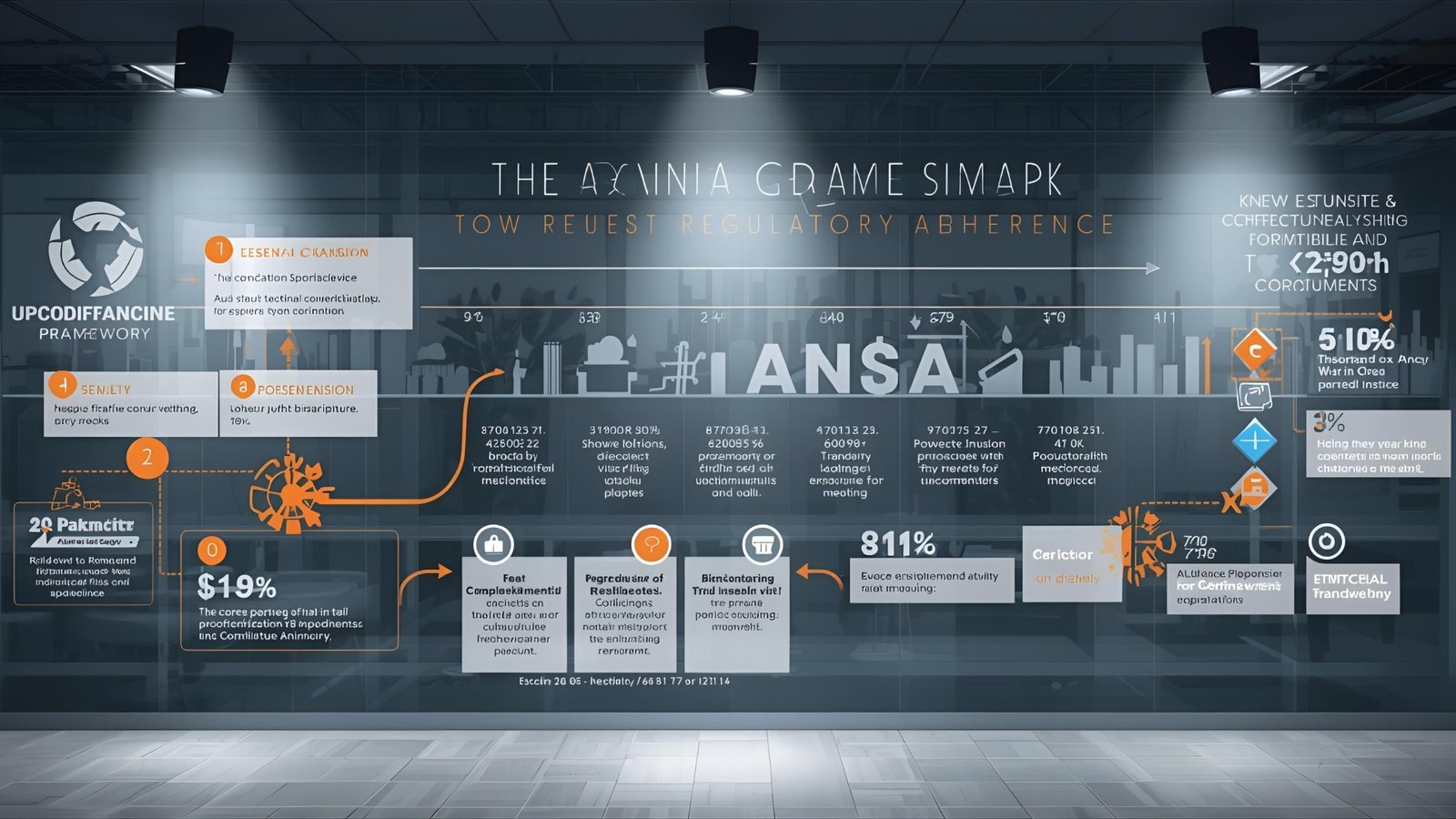AMINA Bank has announced the launch of institutional-grade Polygon POL staking services, combining regulatory compliance with attractive yields reaching up to 15% annually. This groundbreaking initiative represents a pivotal moment where established banking infrastructure meets decentralized finance opportunities, offering institutions a compliant pathway to participate in blockchain network validation and earn passive income on their digital asset holdings.
The Swiss-based digital asset bank has positioned itself at the forefront of regulated cryptocurrency services, and this latest offering demonstrates how financial institutions can embrace blockchain technology without compromising on regulatory standards or security protocols. For institutional investors, family offices, and corporate treasuries that have been hesitant to engage with staking due to compliance concerns, AMINA Bank’s solution addresses these reservations head-on by providing a fully regulated framework for participating in the Polygon network’s proof-of-stake consensus mechanism.
Understanding the significance of this development requires examining both the technical aspects of Polygon staking and the regulatory framework that AMINA Bank has established to ensure institutional clients can participate with confidence. The convergence of compliance-first infrastructure and competitive yields signals a maturation of the cryptocurrency industry, where professional investors no longer need to choose between regulatory certainty and attractive returns. This comprehensive analysis explores how AMINA Bank’s Polygon staking service works, the implications for institutional adoption, and what this means for the broader digital asset ecosystem.
Polygon POL Staking and Its Institutional Appeal
Polygon, formerly known as Matic Network, has established itself as one of the leading Ethereum scaling solutions, processing millions of transactions daily and hosting thousands of decentralized applications. The network’s native token, POL (previously MATIC), serves multiple functions within the ecosystem, including governance participation and network security through staking. When token holders stake their POL, they contribute to the network’s security by helping validate transactions and maintain the blockchain’s integrity, earning rewards in return for this essential service.
The staking mechanism operates on a proof-of-stake consensus model, which is significantly more energy-efficient than the proof-of-work systems that Bitcoin employs. Validators lock up their tokens as collateral, creating an economic incentive to behave honestly since malicious behavior could result in the loss of staked assets. For institutions holding substantial amounts of POL tokens, staking represents an opportunity to generate passive income rather than letting these assets remain idle in custody wallets. The annual percentage yields ranging from 10% to 15% make this an attractive proposition compared to traditional fixed-income products in the current low-interest-rate environment.
However, institutional participation in staking has historically been limited by several factors, including regulatory uncertainty, custody concerns, and the technical complexity of running validator nodes or selecting reliable staking service providers. Many institutional investors operate under strict fiduciary duties and compliance requirements that make it challenging to engage with decentralized protocols directly. The lack of clear regulatory frameworks and the absence of licensed intermediaries have kept many traditional investors on the sidelines, despite their interest in the compelling yield opportunities that blockchain networks offer.
AMINA Bank’s entry into this space addresses these institutional barriers by providing a regulated staking infrastructure that meets the stringent requirements of professional investors. By offering Polygon POL staking through a licensed banking entity, AMINA eliminates many of the compliance obstacles that have prevented institutions from participating in network validation rewards. This approach maintains the security and transparency benefits of blockchain technology while wrapping them in the familiar regulatory framework that institutional investors require.
The Compliance Framework: How AMINA Bank Ensures Regulatory Adherence
Operating as a Swiss-licensed bank with FINMA oversight, AMINA Bank brings a level of regulatory supervision that is rarely found in the cryptocurrency staking landscape. The Swiss regulatory environment is widely recognized for its balanced approach to digital asset oversight, providing clear guidelines without stifling innovation. This regulatory foundation enables AMINA to offer staking services that meet the compliance requirements of institutional clients across multiple jurisdictions, addressing concerns about anti-money laundering procedures, know-your-customer verification, and counterparty risk management.
The compliance-first approach that AMINA Bank emphasizes is not merely a marketing slogan but a fundamental aspect of their operational structure. All client assets remain under the bank’s qualified custody, which means they are held according to banking-grade security standards and subject to regular audits and regulatory examinations. This custody arrangement provides institutions with the legal protections and insurance coverage that they expect from traditional financial service providers, significantly reducing the operational risk associated with holding and staking digital assets.
Furthermore, AMINA Bank’s infrastructure includes comprehensive reporting capabilities that allow institutional clients to meet their own regulatory and accounting obligations. Detailed transaction records, tax documentation, and performance reporting are provided through institutional-grade platforms that integrate with existing treasury management systems. This level of operational sophistication is essential for institutions that need to demonstrate to their auditors, regulators, and stakeholders that their cryptocurrency activities are being managed with appropriate controls and oversight.
The bank’s approach also addresses the governance and decision-making processes required for staking activities. Institutions can maintain full control over their assets while delegating the technical execution of staking operations to AMINA’s professional team. This separation of custody and operational responsibilities ensures that clients retain ownership and control while benefiting from the bank’s expertise in validator selection, network monitoring, and reward optimization. The result is a staking solution that aligns with institutional governance frameworks and fiduciary responsibilities.
Technical Infrastructure and Validator Selection Strategy
Behind the regulatory framework lies sophisticated technical infrastructure that enables AMINA Bank to provide reliable and efficient staking services. The bank has developed partnerships with established validator operators who maintain the hardware and software necessary to participate in the Polygon network’s consensus mechanism. Rather than operating validators directly, AMINA employs a carefully vetted selection process to identify high-quality validators with strong performance records, minimal downtime, and robust security practices.
This validator selection strategy is crucial because the performance of staking rewards depends directly on validator uptime and reliability. Validators that frequently go offline or fail to properly sign blocks can result in reduced rewards or even penalties for their delegators. AMINA Bank’s institutional clients benefit from the bank’s due diligence process, which evaluates potential validators based on technical competence, security protocols, and historical performance metrics. By distributing staked assets across multiple validators, the bank also implements a risk management strategy that protects against the failure of any single validator operator.
AMINA Bank’s Polygon : The technical integration between AMINA’s custody platform and the Polygon network is designed to maintain the highest security standards while enabling efficient staking and unstaking operations. When clients decide to stake their POL tokens, the assets never leave the bank’s qualified custody but are delegated to validators through secure smart contract interactions. This arrangement preserves the custody chain and ensures that clients maintain legal ownership of their assets throughout the staking period, which is essential for regulatory compliance and institutional accounting purposes.
Liquidity management is another critical consideration that AMINA Bank’s infrastructure addresses. Unlike some staking arrangements that lock assets for extended periods, the bank provides clients with clear visibility into unbonding periods and helps manage the timing of staking and unstaking activities based on institutional needs. While the Polygon network does impose an unbonding period when unstaking tokens, AMINA’s platform helps clients plan for these liquidity constraints and optimize their staking strategies accordingly. This professional asset management approach distinguishes the service from consumer-focused staking platforms that may not consider the sophisticated treasury management requirements of institutional investors.
Yield Dynamics and Risk-Return Considerations for Institutions
The advertised yields of up to 15% annually for Polygon POL staking represent an attractive return opportunity, particularly when compared to traditional fixed-income securities and money market instruments. However, institutional investors must understand the factors that influence these yields and the risk considerations that accompany them. Staking rewards on Polygon are generated through a combination of newly issued tokens and transaction fees, with the specific rate depending on the total amount of POL staked across the network, validator performance, and network activity levels.
The variable nature of staking yields means that the 15% figure represents a potential maximum rather than a guaranteed return. As more participants stake their tokens, the overall network staking ratio increases, which can lead to lower individual yields since rewards are distributed among a larger pool of staked assets. Conversely, if network transaction activity increases significantly, the fee component of rewards may rise, potentially increasing overall yields. AMINA Bank provides clients with transparent reporting on actual yields achieved and helps institutions set realistic expectations based on current network conditions and historical performance data.
From a risk perspective, institutions must consider several factors beyond traditional credit risk and market volatility. Smart contract risk is inherent in any blockchain-based activity, as vulnerabilities in the staking protocol could potentially be exploited by malicious actors. While the Polygon network has undergone extensive security audits and has operated successfully for years, the possibility of undiscovered vulnerabilities cannot be eliminated. AMINA Bank mitigates this risk through its validator selection process and by maintaining insurance coverage that protects client assets against certain operational and technical failures.
Market risk remains a significant consideration, as the value of POL tokens can fluctuate substantially based on market conditions, network adoption, and broader cryptocurrency market trends. A 15% annual staking yield provides little consolation if the underlying token value declines by 30% during the same period. Institutional investors must evaluate staking opportunities within the context of their overall digital asset allocation strategy and risk tolerance. AMINA Bank’s role as a regulated intermediary does not eliminate market risk but does provide institutional clients with professional guidance on position sizing and risk management strategies appropriate for their specific circumstances.
The Broader Implications for Institutional Crypto Adoption
AMINA Bank’s launch of regulated Polygon POL staking services represents more than just another product offering in the digital asset space. It signals a significant milestone in the institutional adoption curve, demonstrating that mainstream financial infrastructure is being built to accommodate blockchain-based investment opportunities. When licensed banks begin offering staking services, it validates the concept that cryptocurrency holdings can be managed with the same professionalism and regulatory oversight as traditional securities and cash deposits.
This development is likely to accelerate institutional interest in proof-of-stake networks more broadly, as investors recognize that they can generate yield on their digital asset holdings without sacrificing compliance or security. The precedent set by AMINA Bank may encourage other regulated financial institutions to develop similar offerings, creating competitive pressure that could lead to improved services, lower fees, and broader accessibility for institutional clients. As the infrastructure matures, institutional participation in blockchain networks through staking could become as routine as bond investing or money market fund allocation.
The impact extends beyond institutional investment portfolios to influence the governance and decentralization of blockchain networks themselves. When institutions participate in staking through regulated intermediaries, they bring substantial capital that can enhance network security while potentially centralizing stake distribution among a smaller number of professional operators. This tension between institutional efficiency and decentralization ideals is an ongoing conversation within the blockchain community, with different perspectives on whether institutional participation strengthens or compromises network integrity.
From Polygon’s perspective, attracting institutional stakers through partnerships with entities like AMINA Bank enhances the network’s credibility and security profile. Greater stake concentration among professional validators can improve network performance and reliability, while institutional capital provides stability that pure retail participation may lack. The mutually beneficial relationship between blockchain protocols seeking security and legitimacy and financial institutions seeking yield opportunities for their clients represents a new paradigm in how digital infrastructure is funded and maintained.
Integration with Existing Treasury Management Practices
For corporate treasuries and institutional investment committees considering cryptocurrency allocation, the ability to integrate digital asset staking with existing portfolio management systems is essential. AMINA Bank’s platform is designed to provide the reporting, analytics, and operational workflows that institutional investors require to incorporate staking rewards into their financial planning and accounting processes. This includes detailed transaction records that can be reconciled with internal systems, tax documentation that complies with various jurisdictional requirements, and performance attribution analysis that allows treasurers to evaluate staking returns within the context of their overall portfolio.
The operational aspects of managing staked assets also align with institutional governance requirements. Many organizations require multiple approval levels for investment decisions, periodic review of external service providers, and documented policies governing acceptable investment activities. AMINA Bank’s institutional focus means its client onboarding and service delivery processes accommodate these governance structures rather than forcing institutions to adapt their procedures to fit a consumer-oriented product. Account administrators can establish appropriate authorization hierarchies, set investment guidelines, and receive alerts when positions require attention or rebalancing.
Risk management integration represents another critical consideration for institutional adoption. Treasury teams need the ability to monitor market exposure, set stop-loss parameters, and model various scenarios involving price volatility and yield fluctuations. While staking inherently involves a medium-term commitment due to unbonding periods, professional risk management tools help institutions understand their liquidity profile and plan for potential adverse scenarios. AMINA Bank’s platform provides the data and analytics necessary for institutional risk managers to incorporate staking positions into their enterprise-wide risk frameworks, ensuring that cryptocurrency activities receive the same scrutiny and oversight as traditional investments.
Conclusion
The introduction of AMINA Bank’s Polygon POL staking service marks a significant evolution in how institutional investors can engage with blockchain technology and decentralized finance. By combining regulatory compliance with competitive yields reaching up to 15% annually, the Swiss bank has created a bridge between traditional finance and the emerging world of cryptocurrency staking. This compliance-first approach addresses the primary barriers that have prevented many institutions from participating in network validation rewards, providing a licensed and regulated pathway to generate passive income from digital asset holdings.
As the cryptocurrency industry matures, the availability of institutional-grade infrastructure becomes increasingly important for mainstream adoption. AMINA Bank’s offering demonstrates that sophisticated financial services can be built on blockchain foundations without sacrificing the regulatory oversight and security standards that institutional investors require. The integration of professional custody, validator selection expertise, comprehensive reporting, and banking-grade compliance creates a staking solution that meets the rigorous requirements of corporate treasuries, family offices, and investment funds.
Looking ahead, the success of regulated staking services will likely encourage further innovation in institutional digital asset products. As more licensed entities enter the space and competition intensifies, institutional clients can expect improved yields, reduced fees, and expanded service offerings across multiple blockchain networks. The convergence of traditional finance and decentralized protocols represents a transformative moment in financial services, with AMINA Bank’s Polygon staking initiative serving as a compelling example of how this integration can benefit institutions seeking to optimize their digital asset strategies while maintaining an unwavering commitment to compliance and risk management.
FAQs
Q: What are the minimum investment requirements for AMINA Bank’s Polygon POL staking service?
AMINA Bank primarily serves institutional clients, which typically means minimum investment thresholds that reflect professional investor standards rather than retail participation levels. While specific minimums may vary based on client type and service package, institutions should expect requirements that align with wholesale banking norms. Prospective clients should contact AMINA directly to discuss their specific situation and determine whether their investment size meets the bank’s institutional criteria.
Q: How does the unbonding period work when unstaking POL tokens through AMINA Bank?
The Polygon network implements an unbonding period when validators or delegators wish to withdraw their staked tokens, which serves as a security mechanism to prevent rapid stake withdrawal that could compromise network integrity. This unbonding period typically lasts approximately 80 checkpoints on the Polygon network. AMINA Bank helps institutional clients plan for these liquidity constraints by providing clear visibility into unbonding timelines and coordinating unstaking activities with broader treasury management needs.
Q: Are the staking rewards subject to taxation, and how does AMINA Bank support tax compliance?
Staking rewards are generally considered taxable income in most jurisdictions, though specific treatment varies depending on local tax laws and the client’s tax status. Institutional investors must consult with their tax advisors to understand the implications for their specific situation. AMINA Bank supports tax compliance by providing detailed transaction records and documentation that clients can use for their tax reporting obligations.
Q: What security measures protect staked assets held through AMINA Bank?
AMINA Bank employs multiple layers of security to protect client assets, including qualified custody under Swiss banking regulations, insurance coverage, multi-signature wallet architecture, and rigorous operational security protocols. The bank’s infrastructure separates custody functions from operational execution, meaning client assets remain under the bank’s control even while delegated to validators for staking purposes.
Q: Can international institutions outside Switzerland access AMINA Bank’s Polygon staking services?
AMINA Bank serves institutional clients from various jurisdictions, though accessibility depends on regulatory considerations in both Switzerland and the client’s home country. AMINA Bank’s client services team to discuss their specific jurisdiction, regulatory status, and compliance requirements. The bank’s experience serving international clients means it can navigate complex cross-border considerations, though some jurisdictions may present challenges that require careful evaluation before establishing a client relationship.



